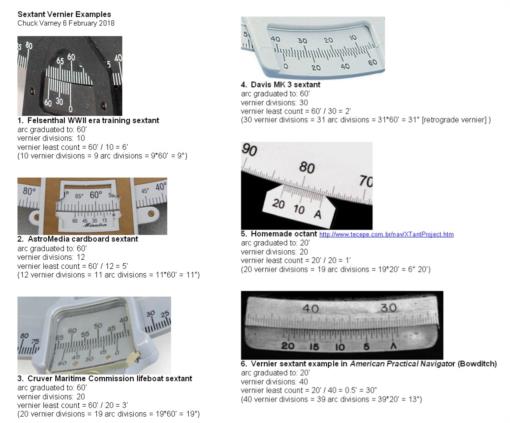
NavList:
A Community Devoted to the Preservation and Practice of Celestial Navigation and Other Methods of Traditional Wayfinding
From: Chuck Varney
Date: 2024 May 26, 08:54 -0700
Jan Eckert, you asked if the 3D sextant example ‘would be accurate to a minute of angle'. In a word, no.
Let me begin with some defining words from a vernier sextant document I did a few years ago.
“The smallest measure to which a vernier reads is called least count. It equals the absolute difference in value between one arc scale division and one vernier scale division. Least count can be calculated directly by dividing the value of one arc scale division by the number of vernier scale divisions. When the number of arc scale divisions is one less than the corresponding number of vernier scale divisions, the vernier reads in the same direction as the arc and is called a direct vernier. When the number of arc scale divisions is one greater than the corresponding number of vernier scale divisions, the vernier reads in a direction opposite to that of the arc and is called a retrograde vernier. “
The arc of the 3D sextant is divided to degrees; that is, to 60’. Its vernier, with a maximum of 60’, has 20 divisions giving a least count of 3’ (60’ / 20 divisions = 3’ per division). You’d like to have a least count of 1’ or less for the potential accuracy of one minute of angle.
I have attached six vernier sextant examples (the Davis Mark 3 among them) that have least counts ranging from 6’ down to 30”.
Chuck V







